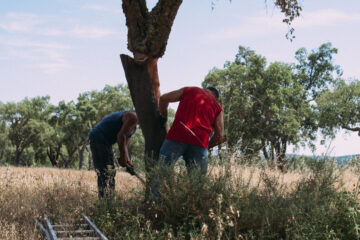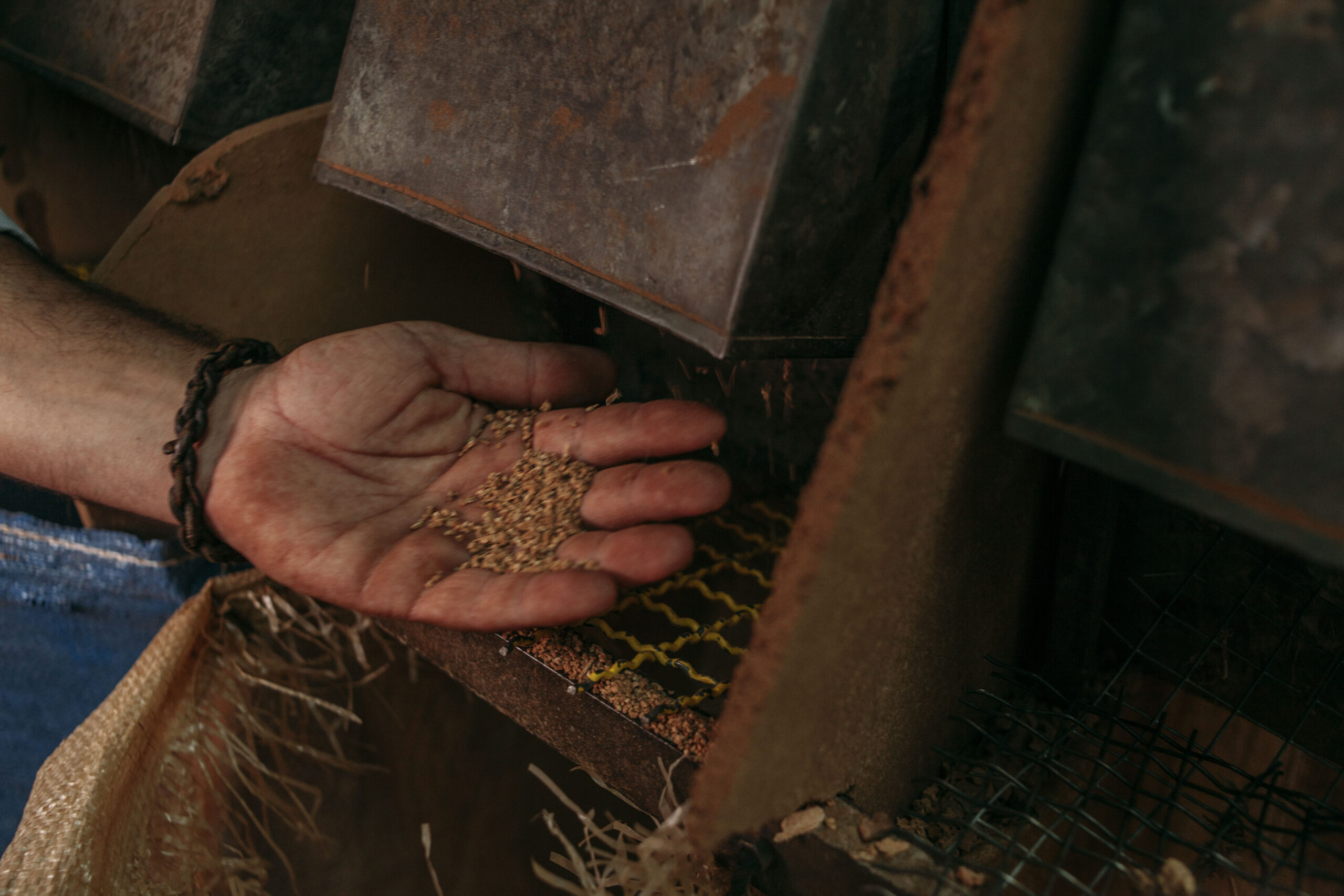The production of cork and of our cork yoga products is both sustainable and eco-friendly. No waste is created and the result benefits both the environment and your health.
Cork needs time to grow and the process of retrieving cork from the tree is quite complex. In our first article For the love of Cork, we left our cork planks stacked and stored in the open air and under the rain and the sun for 6 months…
Let’s check if they are ready to become one of our beloved Corc Yoga mats!
Resting period
This resting period of at least 6 months has one single purpose: to mature and stabilize the cork planks before the production process begins. But the piles of planks are not random, as they have to follow certain rules. For example, they can’t be near materials such as wood to avoid any danger of contamination and they also have to be lifted and far from the ground.
To the factory
The first step of the production process is to boil the planks. This technique is useful to both clean and soften the cork. From there, the planks are manually graded and cut into manageable sizes.
Making our Corc Yoga mats feels like doing a beautiful puzzle, where every small piece of cork has its own special place.
But we have to be honest… The first trials didn’t achieve the results we intended. We tried, we failed, but then, the first 100% cork yoga mat was made!
Nothing goes to waste
Did you know that many of these planks of cork are used to create wine stoppers? They can be machine-punched or even punched by hand if you are looking for higher quality natural corks. But the most interesting part is that the post-punching remains are ground up to create agglomerate cork, which is then used to create bulletin boards and other construction materials.
But going back to the production of our products, even the cork powder that comes from the grinding process doesn’t go to waste. It can be burned to help fuel the machines in the factory used to press our yoga mats.
Then, the chemical components removed during processing are also used to create byproducts. Tannin, hard wax, resinous gum, and phonic acids are some examples of these secondary products, which serve several purposes, from curing leather to making soap.
Fair wages
This work is quite complex and requires expertise and dedication. Our partners work in the cork industry for more than one century and their knowledge is priceless.
One of our priorities was to make sure that the creation of our products would support fair wages throughout the year. That’s why we only source and partner with small family-owned cork farms & factories.
But we also wanted to create a positive impact in our community so we started our Giving Back mission. This is a core value of our brand that we strive for, every day.
For every product sold or registration at The Renewal retreat, we donate a percentage to our youth mental health partners: Desafio Jovem, in Portugal, and the Youth Mental Health Project in the USA.
Eco-friendly and healthy products
Our products are sustainable, recyclable, and biodegradable and their production is based on sustainable practices as well. It doesn’t pollute the soils, the atmosphere nor the water. Actually, the cork tree itself retrieves up to 20 million tons of CO2, while reducing greenhouse effects.
The fact that our mats are also quite resistant thanks to the suberian wax found in the cell walls of cork makes it impermeable to liquids and moisture. This means that our mat is highly durable, germ-free and also an eco-friendly product as it may last several years.
But there are more benefits of using cork, especially for those who practice yoga on a daily basis.
Phthalates and other harsh hormone-disruption materials such as PVC and latex that can be often found in conventional yoga mats are extremely harmful to your health.
A cork yoga mat is also naturally antimicrobial and hypoallergenic, making it an ideal material for those who suffer from asthma and allergies and… for everyone!
Discover more about the benefits of cork and choose your favorite yoga mat and cork block.



